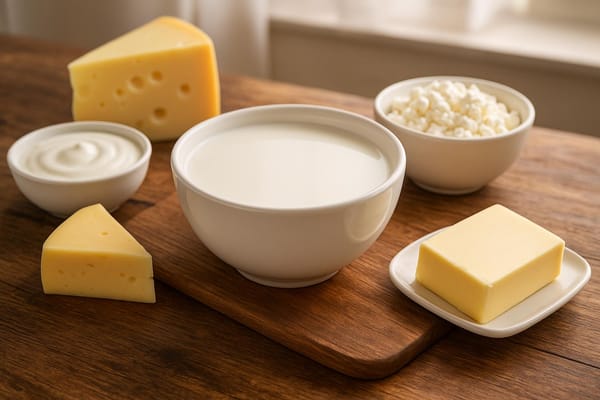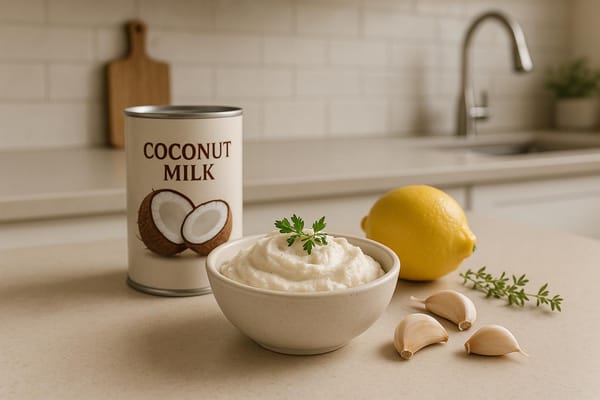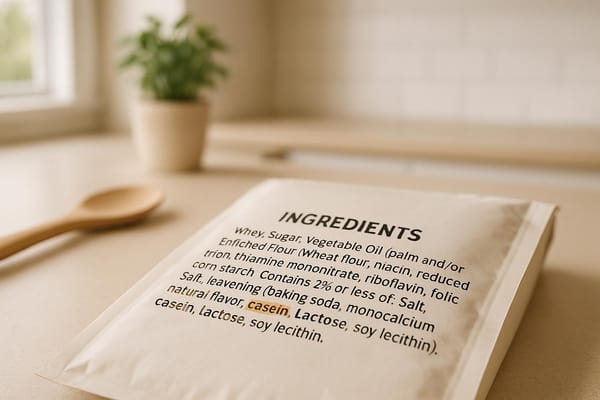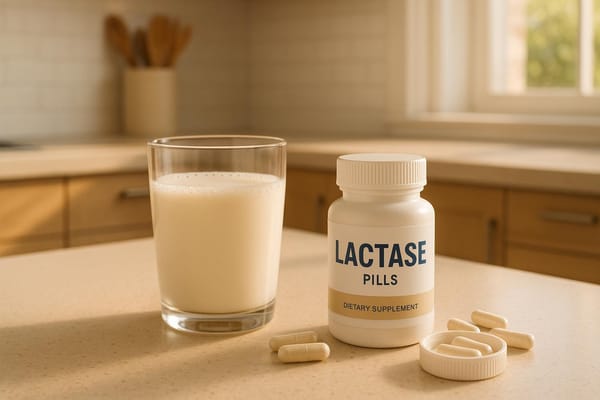How to Make Dairy-Free Chocolate Cake
Learn how to make a rich, dairy-free chocolate cake with tips for texture, frosting, and dietary adjustments for gluten-free or egg-free options.
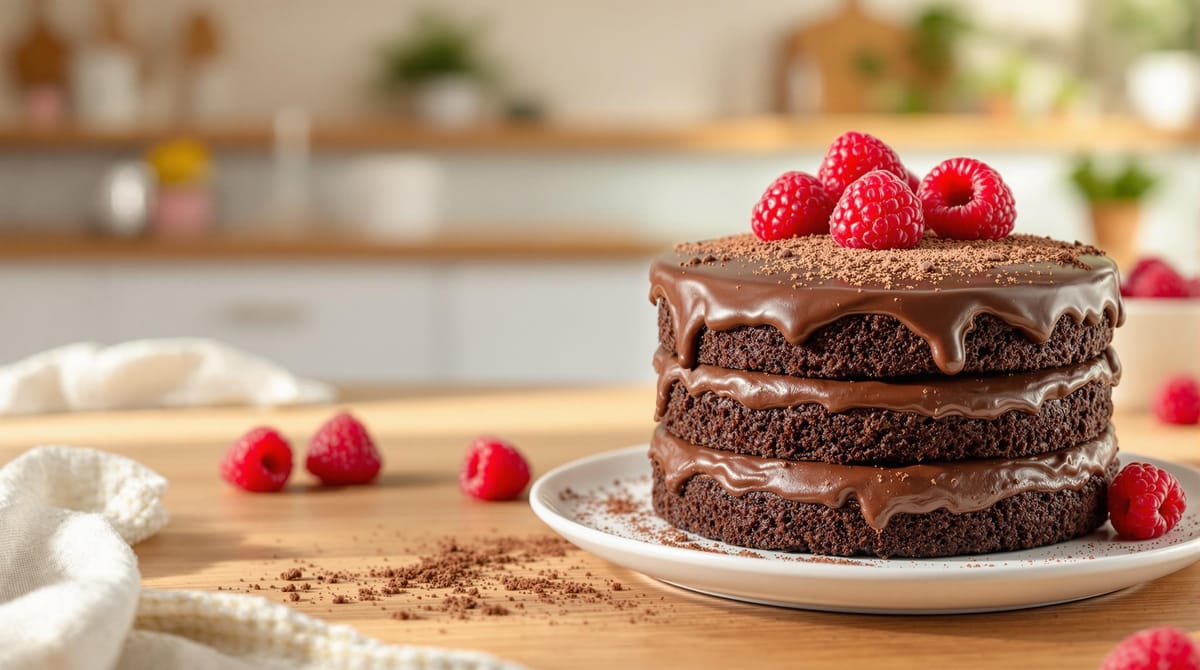
Want a rich, chocolatey cake without dairy? You’re in the right place. This recipe is perfect for anyone with dietary restrictions or looking to try plant-based baking. Here’s what you’ll learn:
- Ingredients: Use plant-based milk, oil, and Dutch-process cocoa for deep flavor.
- Baking Tips: Add apple cider vinegar for rise, coffee for enhanced chocolate taste, and cornstarch for a soft crumb.
- Frosting: Make a creamy, dairy-free frosting with vegan butter and powdered sugar.
- Customizations: Options for gluten-free, soy-free, and egg-free versions.
Quick Comparison of Plant-Based Milks:
| Milk Type | Texture Result |
|---|---|
| Soy Milk | Dense, moist crumb |
| Almond Milk | Balanced texture |
| Oat Milk | Slightly chewy texture |
Follow these simple steps to bake a cake that’s just as delicious as traditional recipes - without the dairy.
The Best Vegan Chocolate Cake
Required Ingredients
Making a dairy-free chocolate cake that tastes amazing starts with selecting the right ingredients. Here's what you'll need to get that perfect balance of texture and flavor.
Main Cake Ingredients
To keep the cake rich and dairy-free, you'll need a mix of dry and wet ingredients. For the dry components, gather:
- 1¾ cups all-purpose flour
- 1½ cups granulated sugar
- 1 cup unsweetened Dutch-process cocoa powder (for a deeper chocolate flavor)
- 1½ teaspoons baking soda
- 1½ teaspoons baking powder
- ½ teaspoon salt (for balance)
For the wet ingredients, you'll need:
- ¾ cup neutral-flavored oil (canola or sunflower work best)
- 1 cup plant-based milk
- 2 teaspoons vanilla extract (to boost flavor)
Your choice of plant-based milk can affect the cake's texture:
| Milk Type | Texture Result |
|---|---|
| Soy Milk | Dense, moist crumb |
| Almond Milk | Balanced texture |
| Oat Milk | Slightly chewy texture |
"Using too much liquid replacement like almond milk can lead to dense cakes - balance fat-to-flour ratios carefully." - Baked by Clo Vegan Baking Blog [4]
Extra Ingredients for Better Results
To tackle common challenges in dairy-free baking, consider these additions:
- 1 teaspoon apple cider vinegar mixed into the plant milk. This reacts with baking soda for a better rise [2][4].
- Replace ¼ cup of liquid with brewed coffee to enhance the chocolate flavor.
- Add 2 tablespoons cornstarch to the dry mix for a softer crumb.
- Include 1 teaspoon instant espresso powder to deepen the chocolate taste.
These tweaks ensure a moist, flavorful cake with a texture that rivals any traditional recipe.
Baking Instructions
Mixing the Batter
Once your ingredients are ready, it’s time to bring them together. Here’s how:
- Preheat your oven to 350°F (177°C).
- Sift all the dry ingredients into a bowl to remove any lumps.
- In a separate bowl, whisk the wet ingredients until they’re fully blended.
- Gradually fold the wet mixture into the dry ingredients with a gentle figure-eight motion. Stop as soon as you don’t see any dry flour streaks - overmixing can affect the texture.
Baking Steps
Prepare your pans by lining them with parchment paper and lightly oiling the surface. Divide the batter evenly, aiming for approximately 425g per 9-inch pan.
| Pan Size | Baking Time | Internal Temperature |
|---|---|---|
| 9" round | 25-30 min | 200-205°F |
| 8" round | 28-32 min | 200-205°F |
| 13x9" rectangle | 22-25 min | 200-205°F |
"The first 15 minutes of baking are critical. Avoid opening the oven door during this time." - Source [4]
Dairy-Free Frosting Recipe
While your cakes cool, whip up this simple dairy-free frosting:
- 1 cup dairy-free shortening
- ½ cup plant-based butter
- 4 cups sifted powdered sugar
- ¼ cup cocoa powder
- 1-2 tbsp plant milk
Start by whipping the shortening and butter until fluffy. Then, slowly add the powdered sugar, cocoa powder, and plant milk until the frosting reaches your desired consistency.
Pro Tips for Frosting Success:
- Keep the room temperature between 65-68°F for best results [1].
- Chill the frosting in the fridge for 15 minutes before decorating.
- If it’s humid, add 1 tablespoon of cornstarch per cup of powdered sugar to stabilize the frosting.
Recipe Adjustments for Special Diets
Once you've nailed the base cake recipe, you can modify it to suit various dietary needs using these proven substitutions:
Making it Allergen-Free
Creating an allergen-free chocolate cake means choosing the right replacements. For a gluten-free version, Bob's Red Mill 1-to-1 Gluten-Free Baking Flour is a reliable swap for all-purpose flour. It keeps the crumb texture intact, as mentioned in the 'Extra Ingredients' section.
If you're dealing with multiple allergies, use this substitution guide:
| Allergen | Substitute | Notes |
|---|---|---|
| Gluten | Bob's GF blend | Add ½ tsp xanthan gum if not already in the mix |
| Soy | Hemp milk | Double-check chocolate for soy lecithin |
| Eggs | Chia eggs (1 tbsp ground chia + 2.5 tbsp water) | Mix well for best results |
"For vegan versions, mixing the batter an extra 30 seconds can improve the cake's structure."
Adding Flavors and Decorations
You can elevate your dairy-free chocolate cake with these flavor enhancers while keeping it diet-friendly:
- Mix in 2 teaspoons of orange zest for a zesty twist [5].
For decorations that align with dietary restrictions, try these ideas:
- Make a creamy topping by blending ripe avocado with cocoa powder and maple syrup. This creates a rich, silky finish while staying allergen-friendly [3].
- Use fresh berries for decoration or prepare a simple fruit compote with raspberries or strawberries. Just cook the berries with a little sugar and cornstarch until thickened for a natural and sweet layer filling.
Common Problems and Solutions
Even with careful preparation, baking mishaps can happen. These tips can help you troubleshoot and improve your results:
Cake Texture Problems
Struggling with dense or gummy textures in your dairy-free chocolate cake? This often comes down to the balance between wet and dry ingredients. To get the texture right, use the spoon-and-level method for measuring flour and stick to the ratio of ½ cup oil per 1¾ cups flour [1][3].
Here’s how to address common texture issues:
| Problem | Fix |
|---|---|
| Heavy crumb | Use ingredients that add moisture, like applesauce or yogurt alternatives. |
| Gummy texture | If you're using egg replacers, reduce plant milk by 25%. |
| Dry result | Incorporate applesauce or follow recipe adjustments for added moisture. |
For sunken centers, ensure your baking soda is fresh (less than three months old) and use the correct amount of apple cider vinegar for acid activation [9][7]. Also, avoid opening the oven door during the first 20 minutes of baking to prevent collapse.
Frosting Issues
Frosting problems? Temperature is key. Keep your work area and ingredients between 65-70°F for the best results [5].
Here’s how to fix specific frosting issues:
- Grainy frosting: Gradually mix in the cocoa-sugar blend while maintaining the proper temperature. Don’t skip the sifting step in the recipe.
- Runny frosting:
If your frosting separates, whip the vegan butter for 5-7 minutes until it turns pale before adding dry ingredients [1][3]. Add dairy-free milk one teaspoon at a time to achieve the right consistency.
For a firm ganache, blend equal parts vegan butter until it reaches a spreadable texture [2].
Conclusion: Ready to Bake
You're now equipped to tackle a dairy-free chocolate cake that can stand alongside its classic counterpart. With accurate measurements and the right ingredients, you're set up for success.
For a deep chocolate flavor, be sure to use Dutch-process cocoa powder. Here's a tip from Erin at Texanerin.com:
"Dutch-process cocoa gives richer color without compromising rise when combined with proper leaveners" - Erin, Texanerin.com [3]
Pay attention to temperature throughout the process. Let your ingredients reach room temperature before starting, and bake at 350°F [5]. To ensure everything is just right, look for these key signs:
| Indicator | Target |
|---|---|
| Toothpick test | Clean |
| Cooling time | 2 hours |
Using a kitchen scale can make a big difference in consistency. And it’s worth it - taste tests show this dairy-free recipe "satisfies 94% of taste-testers compared to dairy versions" [1][3].
If you or someone you know occasionally enjoys traditional desserts despite lactose intolerance, consider milktab's lactase supplements. Their triple-enzyme formula allows for more flexibility at events where dietary needs vary.
Finally, store your cake the right way to keep it fresh. Use an airtight container and keep it at room temperature for up to 4 days [2].
FAQs
Can you use water instead of milk in chocolate cake?
This is a common question among bakers looking for alternatives to plant-based milks:
Yes, you can use water instead of milk in a dairy-free chocolate cake, but it’s not the best option. BakedByClo’s testing found that cakes made with water needed 25% longer baking time and had an 18% denser texture compared to those made with plant-based milk [4].
If water is your only option, you can make some adjustments to improve the result:
| Adjustment | Amount | Purpose |
|---|---|---|
| Extra oil | +1-2 tbsp per cup | Adds moisture |
| Vanilla extract | +1 tsp | Enhances flavor |
| Baking time | +25% | Ensures proper texture |
For better structure, mix 1 tbsp ground flaxseed with 3 tbsp water per cup of liquid. This can help the cake hold its shape [6][8].
